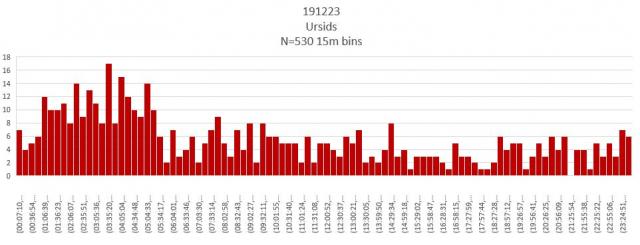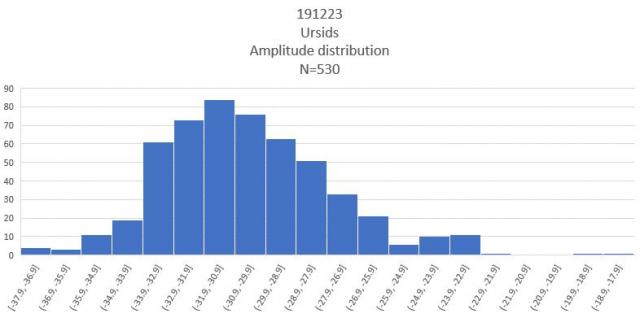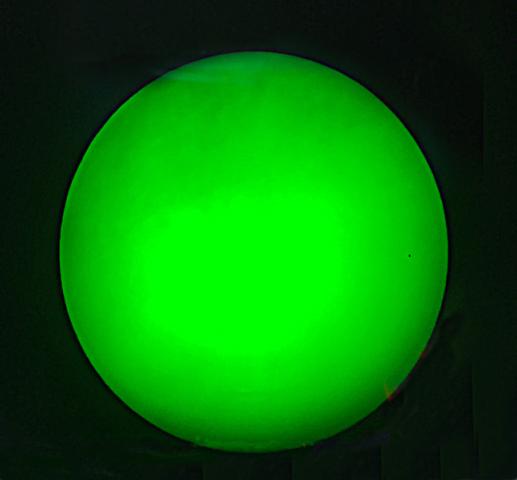Thanks for those pictures, that was the first BAA meeting that I attended, shortly after joining. I very much enjoyed it.
Deeply sorry to learn of Heathers death. I am sure that every on in the BAA who knew her and Nigel will join with me in sending their deepest Sympathy’s to Nigel.
My (very incomplete) knowledge of Elizabeth in the Liverpool Astronomical Society is that she joined on 1884 January 21 and that she published two papers in the LAS Journal:-
1, Solar Section Report, vol. 4, p. 2 (1885 October)
2, Auroræ and Sun-spots, vol. 7, p. 52 (1888 December)
She may well have made other contributions.
Elizabeth is noted as having a 6½ inch aperture Calver reflector, a 3½ inch aperture Wray refractor and a 3 inch aperture refractor by an unknown maker and various spectroscopes in vol. 2, no. 6 (1896 June) p. 97 of the Journal of the Astronomical Society of Wales. On page 120 of vol. 1, no. 4 (1898 November) of the Cambrian Natural Observer she is noted as an ‘Associate Member’ of the Astronomical Society of Wales.
Volume 5, p. 28 (1897) of our Memoirs lists her observations of variable stars during the summer and autumn of 1895, a field not usually associated with her name.
“go to the website and register your observatory as a future participant mentioning in the ‘Comments’ box that you are an amateur astronomer and that you are joining the BAA Exoplanet Division’s initiative to support the ExoClock Project.”
Been there, done that.
Clear skies are erratic in these parts. It was (mostly) clear last night but with ferociously high katabatic winds so no observing was done. In those conditions the seeing is typically 15-20 arcsec and the scope flaps around on a similar scale, ruining tracking, even though it is inside a dome.
I would like to echo Roger’s message by encouraging would-be observers to go to the website and register your observatory as a future participant mentioning in the ‘Comments’ box that you are an amateur astronomer and that you are joining the BAA Exoplanet Division’s initiative to support the ExoClock Project.
We just need some clear skies now – Haven’t seen a properly clear night since last November!
Here in York I monitored (using BRAMS 49.970MHz) forward scatter radio echoes for the Ursids 191223 and for several hours either side on the adjoining days. The IMO Calendar had predicted a visual maximum at 191223 0300. The attached events chart seems to support this timing for the radio results as well: rates increased to a peak at around that time, rising beyond what might perhaps be expected from the normal diurnal curve. Hourly rate averaged over 24h was 22.
The histogram of amplitudes shows a detected range of 20dB. The results seem to show some depletion at the fainter end of the scale but whether this is instrumental or even related to the Ursids I don’t know. Forward scatter results cannot distinguish between shower meteors and sporadics, unfortunately….!
but whether this is instrumental or even related to the Ursids I don’t know. Forward scatter results cannot distinguish between shower meteors and sporadics, unfortunately….!
Colin

I only recently joined the BAA a few months ago and this was the first meeting that I have attended. Have to say I thoroughly enjoyed the afternoon, all speakers were excellent. Looking forward to attending more events when I can make it up to London. Thanks to all involved in the organisation of the day.
Excellent meeting.
Missed last years stream so I was looking forward to this one and wasn’t disappointed.
At the end of the first lecture I even twitched my arms as I went to join in with the applause before I stopped myself when I realised I wasn’t actually there.
Very good news that all the BAA meetings will be streamed.
Well done to every one involved.

I was unable to join my fellow club members at our CPAC transit get together, work got in the way.
But I was lucky enough to sneak a scope out and get a look, sadly missing first and second contact due to an unfortunate timing of a work phone call.
Observed and enjoyed, then had a go with my phone hand held and struggled as always.
But I did get something, which was better than normal.
Derek,
a nice capture. I’ve just acquired similar equipment with the help of William Stewart and I’m in the process of setting it up. I Just need to get a nice focus, and settings but the weather is against me at the moment.
Hope to join the team any night now
Eric
The beams look like they are not parallel between zero and 1st order. But I thought that’s the way the physics worked – the light is diffracted through an angle relative to the incident light. I’ve done a series of repeatability tests by firing LASERs at roof tops and aerials (in the dead of night) and will be looking at the spread of the distances from the zero order. But this is on dots, not the beams. I’m looking at the target as the source of the LASER light coming back to the sensor. Some images on the wide angle lens show the beams at angles. But we know even parallel roads will join together in the distance (perspective). I’m measuring the position of the diffracted dot relative to the zero order dot. That should show if there is any non linearity in the wavelength range I guess. Another problem is, the diffraction gratings are plastic, so they are not rigid, and can bend, causing curved spectra (curvature along the wavelength axis). But despite that variation, I hope that will be insignificant and not interfere significantly, or at all, with identifying elements.
Observers who may be hoping to see a graze in 2020, will find the predictions in the download area under Lunar Section. https://britastro.org/downloads/17673 Here i have prepared the information for each event on page 42-43 of the BAAH 2020. The grazes listed are in prediction order and star name. The zip files can be downloaded to your computer, and unzipped to reveal thee files. An explanation is given on the downloads page.
On a related topic, the UKoccultations Yahoo Group i set up in 2013, has been moved to https://groups.io/g/UKoccultations The reason is that the Yahoo Groups host is not being supported now. You are welcome to join the new group.
Please report any graze attempts or even results, to the Lunar Section or the discussion group.
Wishing you good observing – and thank you to the Lunar section Web Manager for assistance.
Tim
(Lunar Section Graze Coordinator)
I am not a member of the “12a Collaboration” but there must be some of the VSS Section who are on here. If not, I am sure an email to Dr Matt Darnley at LJMU would bring you up to speed if you want to join the collaboration.
Cheers
Robin
I thought I recognised the comet photo in the Mirror article – it is Comet West 1975 VI from 1976 – see the following link
https://enacademic.com/pictures/enwiki/67/C_1975_V1_%28West%29_1976-03-09_6h_UTC.jpg
I was new to astronomy back then but heard about this comet but failed to see it in the pre-dawn sky – I then joined ‘The Astronomer’ to make sure I didn’t miss any other bright comets!
Can I draw members attention to a joint BAA/SPA workshop next June on Advanced Planetary Imaging which David Arditti and I are organising. For more information go to; https://britastro.org/node/19008
Hope to see some of you there,
Regards,
Martin Lewis
(3200) Phaeton is one of those asteroid-comet transition objects, so is particularly interesting. I see the article you refer to was the subject of a presentation by Teddy Kareta at the AAS Division of Planetary Sciences meeting last October. I have been corresponding with Teddy on another topic in recent months and am hoping to be a joint author on his latest paper.
Concerning Phaeton, Alex Pratt has recently drawn our attention to a successful occultation campaign to measure its shape. A couple of weeks ago the object underwent a stellar occultation as seen from the USA and we now know that its silhouette measures 5.7 x 4.7 km. See:
http://iota.jhuapl.edu/20190729PhaethonAug09.ppt
It is also on a target list of objects to be visited by the DESTINY+ space probe due to launch in 2022.
Have you downloaded the complete GCVS? If so a preliminary selection based on a minimum Dec, a plausible range of RA and a type of EA, EB, … will give you an initial range of candidates.
What do you consider high-cadence? Minutes, seconds or milliseconds?
My 0.4m telescope (located only about 100km from El Teide) could manage a very few millimags precision (unfiltered CCD, so approximately Gaia G band) down to mag 11.5 with a cadence of around a minute as demonstrated with an observation of an exoplanet transit.
In fact, why don’t you try for an exoplanet transit? Not only do you get your differential timing data, you also add to our knowedge of exoplanets. The minimum may be wide but the ingress and egress events are short-lived and it’s generally possible to observe both in a single session.
Would you like me to join in perhaps, weather permitting? It’s been unusually cloudy in these parts of late. I also need to get the new camera commissioned first but I hope that doesn’t take too long.
Jeremy’s recent update on the HR Lyr campaign prompted me to explore the VSS pages in greater detail. Over there is a link to a fascinating article on the observation from the UK of variables with a declination more than 30 degrees south of the equator. This got me thinking …
My observatory is at a latitude of 28.64 degrees north so, in principle, I could reach a declination of 90 – 28.64 – 0.5 = 61.9 degrees south, where the 0.5 allows for atmospheric refraction. In practice, I don’t have a perfectly flat ocean horizon to the south. Far from it: it’s very lumpy indeed. However, omega Centauri, at 47.5 degrees south has been imaged successfully from here.
I’ll see what I can do. Anything below -50 will be nice and, who knows, -55 might be possible.
Of course, other observers are encouraged to join in the fun, and should choose targets appropriate to their latitude. I remember seeing a photo of the Big Dipper taken from northern Queensland where a couple of the stars were only two or three degrees above the horizon.
P.S. The classical risque answer to the question posed in the subject is “Chihuahuas”. 😉
Given the weather in my part of the world my kit is an increasingly wasted investment. I have looked at moving it to a remote European location with good clear skies but, the costs are quite high ( ~ £300 per mth) and I probably could not process all the data I could potentially generate.
These considerations have led me to make the following offer.
I would be happy to donate my kit to a small group of BAA members or the BAA as an institution to set up and jointly fund on an ongoing basis a remote observing facility for photometry and spectroscopy.
If individuals, I would think five including me would be a good number giving about a night’s worth of observing a week each.
The kit I have is a Paramount MEII with the Sky X on Desktop PC and an Orion Optics ODK 16. Together with and FLI an Atlas focuser and various two backs ends.
One has an Optec rotator with filter wheel and ASI1600mm CMOS camera for V,B photometry and SA200 spectroscopy. The second has a Foresight Innovations ONAG with a FLI ML8300 CCD acquisition camera, Shelyak Fibre Guide-head with Utrastar guide camera etc. plus fibre fed spectroscope (although this would need some modifications for higher night time temperatures and might not be fully practical).
Obviously happy to consider other backend options.
I realise swapping would require manual intervention but it could be made quite simple as the core system is very robust. Maybe one is enough in any case.
I would like to know if anyone is seriously interested in taking part in such a venture and or would the BAA as an institution be interested?
I would expect it to result in a formal agreement so it is clear what happened to the kit when I pass on, members drop out etc.
Regards Andrew
We are now one month into the campaign and, whilst it’s still early days, it’s good to see the first data coming in. Many thanks to: David Boyd, Walter Cooney, Sjoerd Dufoer, Ian Miller, Ken Menzies, Martin Mobberley, Roger Pickard and Gary Poyner.
The star has varied between mag 15.4 and 16.2. Time series photometry by Roger Pickard and Ken Menzies has shown various humps and bumps in the light curve, but it’s too early to determine if they are periodic.
With Lyra becoming more accessible in the evening sky, I hope that further observations will begin to flow in. Do feel to join in the campaign. We are looking for nightly snapshot photometry to determine the overall shape of the light curve and well as some multi-hour photometry runs to look for short-term periodicities.
Further details about the campaign can be found here.
but whether this is instrumental or even related to the Ursids I don’t know. Forward scatter results cannot distinguish between shower meteors and sporadics, unfortunately….!

